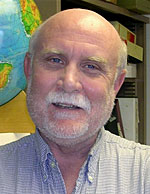
Glen Fredlund
Education
PhD, Interdepartmental Special Studies Degree Program, Quaternary Studies, Departments of Geology, Geography, and Systematics and Ecology, University of Kansas, 1992
MA, Anthropology, Department of Geography and Anthropology, Louisiana State University, 1983
BA, Anthropology, Department of Geography and Anthropology, Louisiana State University, 1977
Courses Taught
Geog 340 – Biogeography Syllabus
Geog 350 – Conservation of Natural Resources Online Syllabus
Geog 475 – Geography of Soils Syllabus
Research Interests
Biogeography: Quaternary Climate Change and Vegetation Response, Landscape Ecology, GIS, and Conservation
Geomorphology: Fluvial and Eolian Response to Climate Change
Soils Geography: Soil Development and Landscape Evolution
Geoarchaeology: Reconstruction of Vegetation and Climate for Archeology
Other Relevant Activities
Director, Conservation and Environmental Science Program